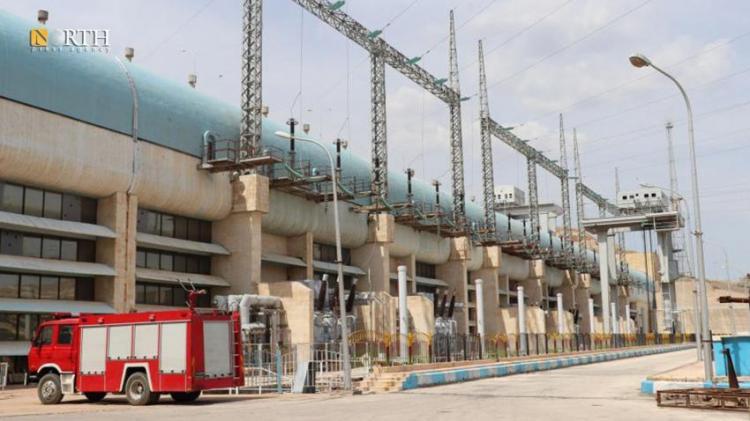Low water levels negatively affects power in Syria’s northeast
QAMISHLI, Syria (North Press) – On Sunday, the co-chair of the Energy and Communications Office in the Jazira region, Ahin Sweid, said that the water coming from Jarablus to northeastern Syria has not exceeded 250 m3/hour for a month.
In an exclusive statement to North Press, Sweid indicated that the decrease in water resources was because of the consumption of the dams’ lakes water in order to preserve the continuity of power to feed all areas, and thus led to a decrease in lake levels and reach critical numbers.
Sweid stated that the regions’ allocations of power decreased in proportion to the lowest consumption of water from the lakes, “due to the continuity of the partial operation of the turbines for the longest possible period.”
She believed that Turkey is fighting the peoples of northeast Syria with water coming from the Euphrates River, which is the main source of power generated from the turbines of the three dams of Rojava, Tabqa and Hurriyah (Freedom).
The allocations of the Jazira region of power decreased to “less than 70 megawatt/hour only, and this is the main reason for increasing rationing hours in all cities and towns of the Jazira region,” according to Sweid.
Recently, the Energy and Communications Office of the Jazira region has posted pictures on its Facebook account, showing a clear decline in the water level in the dams.
During the past few days, the cities of northeast Syria have witnessed a significant decrease in the rationing hours of power compared to the past months.

